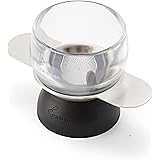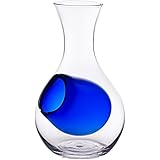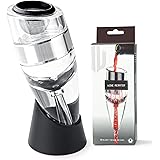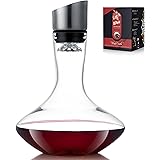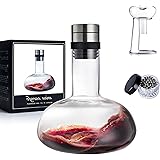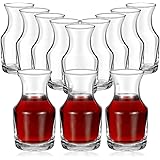Demystifying Food and Wine Pairing: Jancis Robinson’s Guide to Confident Wine Choices
Navigating the world of food and wine pairing doesn’t have to be an intimidating task governed by inflexible rules. As highlighted in the insightful video above featuring the esteemed Jancis Robinson, the true art of food and wine pairing often lies in an adventurous spirit and a willingness to trust your own palate, rather than adhering to rigid dictates that can feel off-putting to many wine consumers.
Indeed, while great books and molecular research offer ideal pairings, Robinson argues that such prescriptive advice can stifle enjoyment and discourage experimentation. She suggests that the concept of “one perfect match” is largely a myth, applicable only in highly specific, controlled environments like a Michelin-starred restaurant with a dedicated sommelier. In everyday life, wine choices are often more spontaneous, and the goal should be enjoyment, not absolute perfection.
So, what happens if a pairing isn’t “perfect”? Robinson reassures us that a slight clash is hardly a disaster. Simply having a glass of water or a bite of neutral bread between mouthfuls can reset the palate, allowing you to continue enjoying both the food and the wine without a “thunderbolt from on high” striking you down. This liberating perspective encourages us to embrace flexibility in our culinary journeys.
Beyond the “Perfect Match”: Embracing Practical Wine Pairing
The notion of a single ideal pairing can feel restrictive, especially when presented with complex rules. Jancis Robinson encourages a more pragmatic and personal approach to wine matching, focusing on enjoyment rather than dogma. This shift in mindset empowers wine drinkers to make confident choices in real-life scenarios, where the wine on hand and the dish prepared often dictate the combination.
One of the core tenets of this practical philosophy is to recognize that your own taste experiences build an internal “computer” that subtly guides your choices over time. As you explore different flavors, your palate develops a nuanced understanding of what complements what, making intuitive wine choices more reliable. This personal evolution of taste is far more valuable than blindly following a set of predetermined wine rules.
Moreover, the emphasis shifts from finding the “only” match to discovering “pretty good” matches, or even surprisingly delightful ones. This approach reduces anxiety and fosters a more relaxed atmosphere around the table, allowing the social and sensory aspects of dining to take precedence. Embracing this flexibility unlocks a wider array of enjoyable food and wine pairings.
Redefining the Rules: Matching Weight, Not Just Color
The age-old adages—red wine with meat, white wine with fish—are, according to Robinson, made to be broken. While these guidelines can serve as a starting point, they often oversimplify the complex interplay of flavors and textures. Modern wine pairing wisdom emphasizes matching the weight and intensity of the dish to the body and structure of the wine, transcending mere color classification.
1. **Challenging the Red with Fish Myth:** Many fish dishes, particularly richer, more substantial ones like salmon or tuna, can be beautifully complemented by a lighter red wine such as Pinot Noir. The delicate red fruit and subtle tannins of a good Pinot Noir can stand up to the richness of these fish without overwhelming them, creating a harmonious balance that a simple poached white fish might struggle with.
2. **Considering Tannins:** Tannic young red wines, known for their drying sensation, can overwhelm delicate flavors. However, pairing a very tannic, chewy red with a similarly substantial food, often meat or even a hearty lentil bake, can dramatically improve the wine’s character. The fat and protein in the food bind with the tannins, making the wine taste smoother and more mature, effectively “adding years of maturation” to its profile.
3. **Full-Bodied Whites with Meat:** Don’t limit your steak dinner to red wine. A powerfully full-bodied white, such as a rich California Chardonnay or a Condrieu made from ripe Viognier grapes from the Northern Rhône, possesses the structure and intensity to stand alongside a succulent steak. These wines offer a creamy texture and often nutty or stone fruit notes that can create an unexpected, yet delightful, flavor compatibility.
The Versatility of Rosé: Your Go-To Pairing Powerhouse
When faced with a diverse menu, perhaps at a large party where everyone orders a different dish, selecting a single wine that can complement a broad range of flavors becomes a challenge. Jancis Robinson champions rosé as an incredibly versatile solution in such common scenarios. A good quality, fairly full-bodied dry rosé can indeed be one of the most adaptable wine choices.
Rosé wines derive their enchanting color from red wine grapes that are left in contact with the grape must (the freshly crushed grape juice and skins) for only a short period. This brief maceration extracts just enough pigment to tint the wine, rather than deeply color it like a red wine. This production method often results in a wine that possesses the freshness and acidity of a white, coupled with some of the fruit and structure found in lighter reds.
This unique balance allows rosé to bridge the gap between many food types. It can stand up to grilled meats, roasted vegetables, vibrant salads, and even some spicier dishes, making it an excellent choice for varied dining experiences. Its dry, crisp character often cleanses the palate, preparing it for the next bite, proving that sometimes, the best wine for the table is one that simply goes with everything.
Regional Riches: Unlocking Classic Food and Wine Combinations
While strict rules are discouraged, certain geographic combinations have stood the test of time, becoming classic wine matching examples due to centuries of local culinary tradition. These pairings aren’t just about taste; they reflect a sense of place, a harmonious marriage of local produce and indigenous grape varietals.
1. **Oysters and Muscadet:** A prime example is the classic pairing of fresh oysters from Brittany with Muscadet, a crisp, saline white wine from the Loire Valley. The wine’s bright acidity and mineral notes perfectly cut through the briny richness of the oysters, enhancing their delicate flavor without overpowering them.
2. **Saucisson and Cru Beaujolais:** In the Lyon region of France, the rich, savory flavors of saucisson (a type of cured sausage) find a perfect partner in a full-bodied Cru Beaujolais. Unlike generic Beaujolais, Cru Beaujolais wines (from specific villages like Morgon, Moulin-à-Vent, or Fleurie) offer more structure, depth, and earthy notes, which beautifully complement the umami and fat in the charcuterie.
3. **Austrian Grüner Veltliner:** Austria’s characteristic white grape, Grüner Veltliner, produces full-bodied wines with distinctive white pepper and herbal notes. These wines are incredibly versatile, capable of pairing with a vast array of dishes, including quite meaty ones. Its vibrant acidity and often slightly spicy finish make it an excellent counterpoint to rich and hearty Central European cuisine.
4. **Alsace Whites with Hearty Dishes:** In Alsace, a French region with strong Germanic influences, the full-bodied white wines (such as Riesling, Pinot Gris, and Gewürztraminer) are traditionally served with a huge array of hearty local dishes, including game and other meaty preparations. These wines possess enough richness and aromatic complexity to complement the bold flavors of the regional cuisine, demonstrating that robust whites are far from delicate wallflowers.
Unexpected Delights: White and Sweet Wines with Cheese
The notion of always pairing red wine with cheese is another “rule” ripe for breaking. As Jancis Robinson points out, a growing number of wine-sophisticated people are opting for white wines with their cheese, recognizing that the tannins in many red wines can clash significantly with a wide variety of cheeses, often making both the cheese and the wine taste less appealing.
1. **White Wine with Cheese:** White wines, particularly those with good acidity or aromatic complexity, can often create more successful flavor compatibility. For instance, the classic geographical combination of Sancerre (or any dry Sauvignon Blanc) with a fresh goat’s cheese is a match made in heaven. The crisp, citrusy notes and herbal undertones of the Sauvignon Blanc perfectly balance the tangy, often creamy texture of the goat’s cheese.
2. **Sweet Wines with Cheese:** Perhaps the most overlooked yet fantastic combination is sweet wine with cheese. The interplay of sweetness and saltiness creates a delightful contrast on the palate, making it a superb way to conclude a meal. Imagine a rich Port with a strong blue cheese, a luscious Sauternes with a creamy brie, or a vibrant sweet Riesling with an aged cheddar. These dessert wines offer a textural richness and aromatic intensity that can elevate the cheese experience to new heights, proving that confident pairing is about exploring beyond the conventional.


